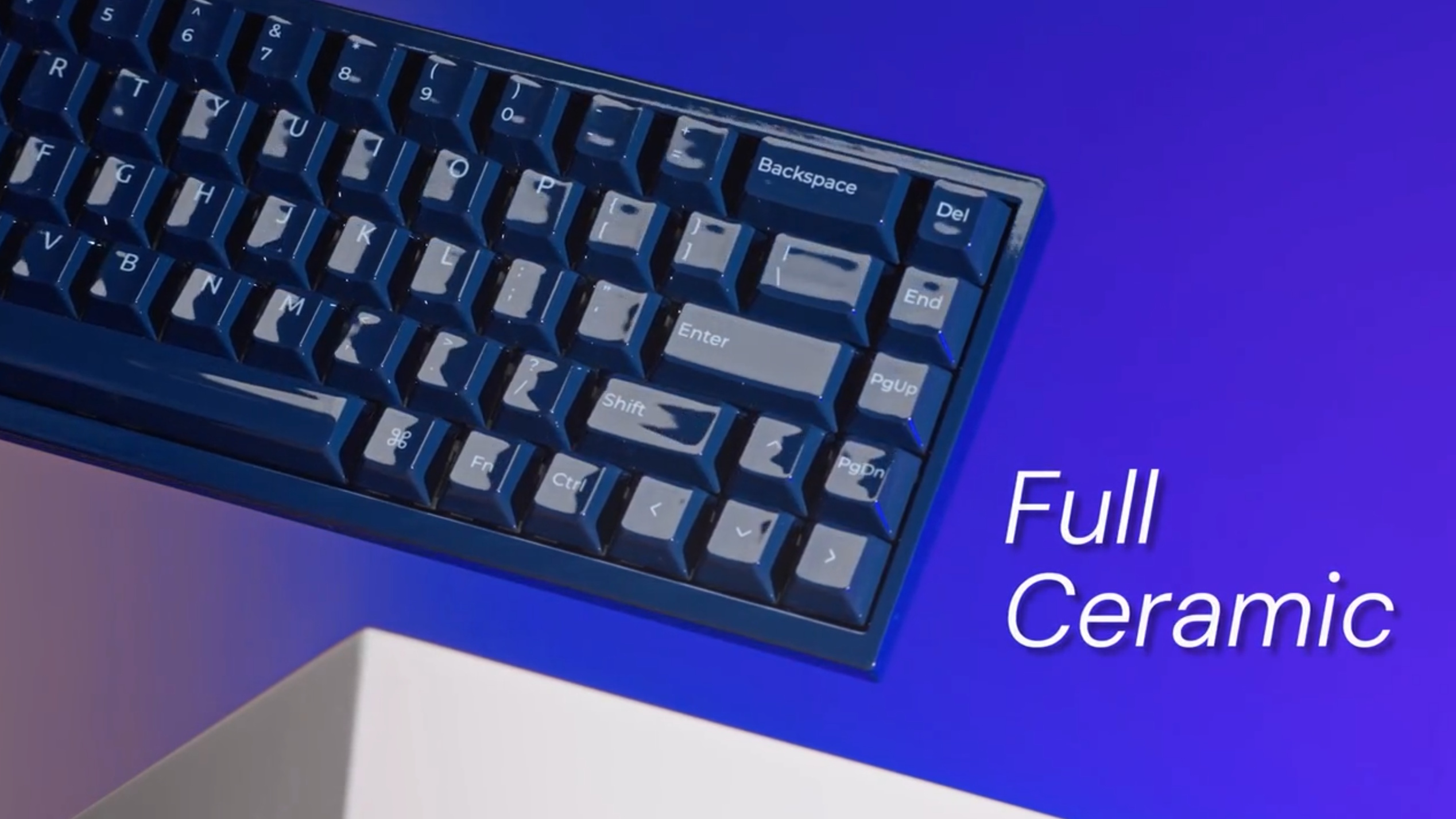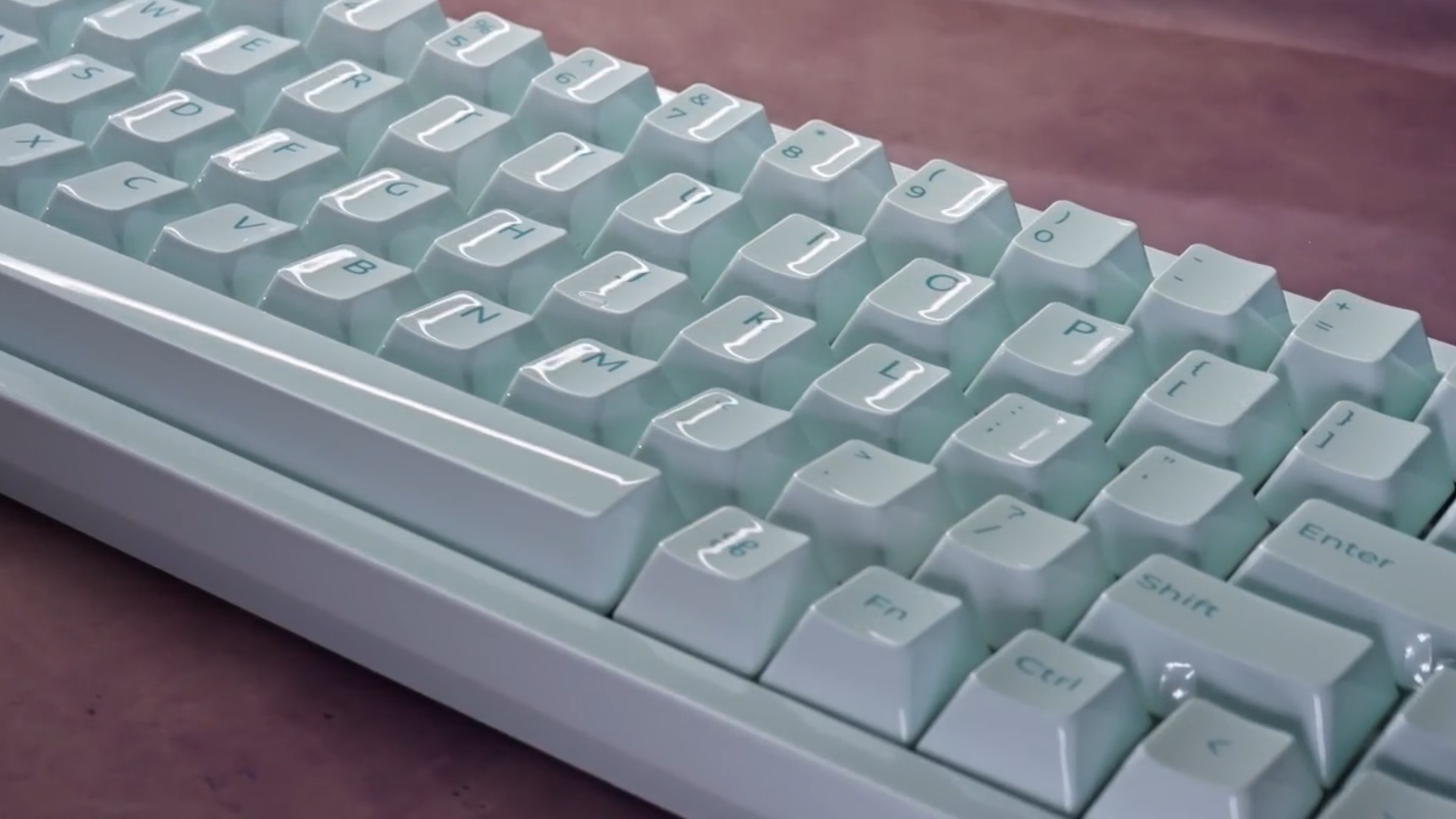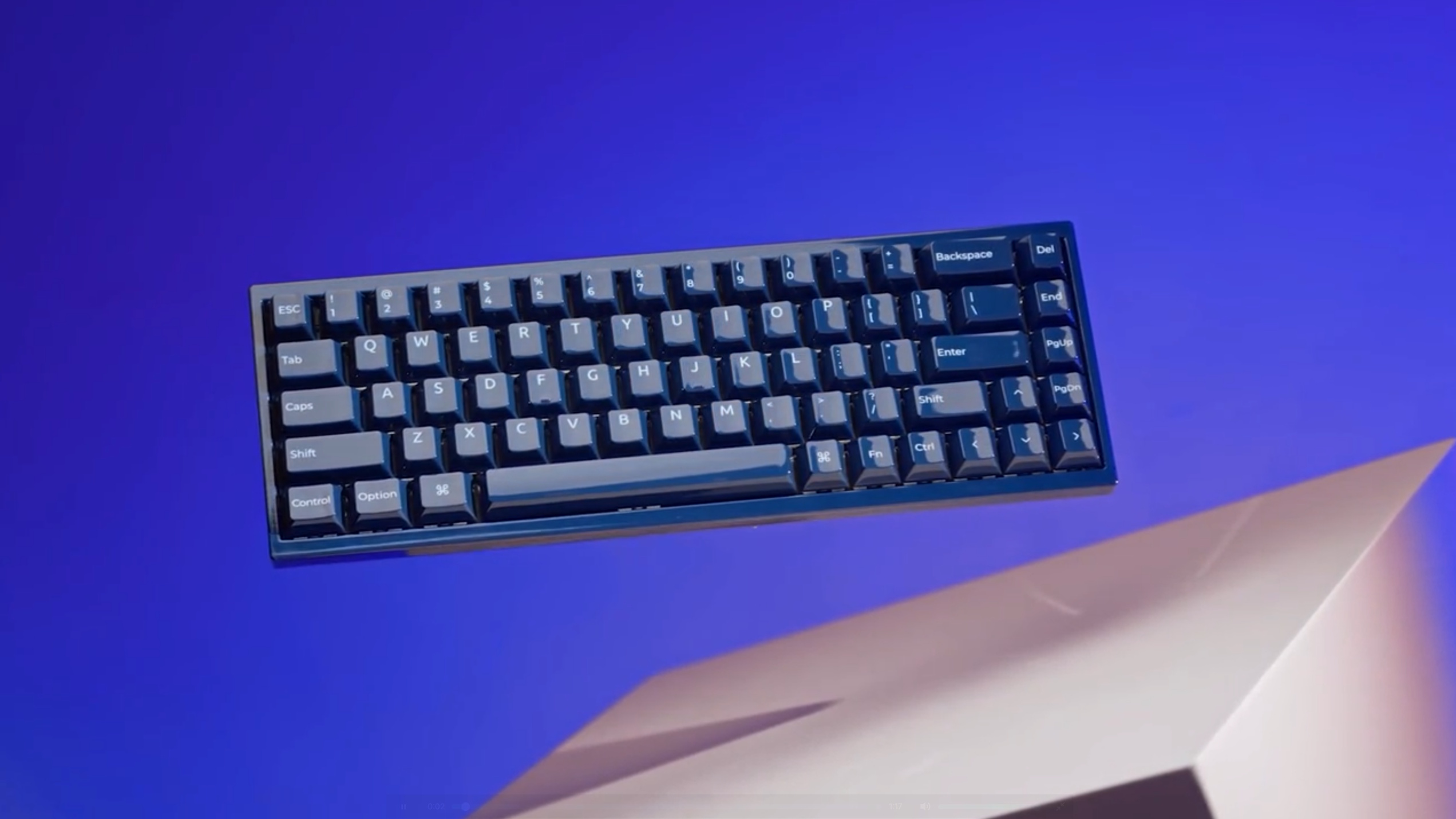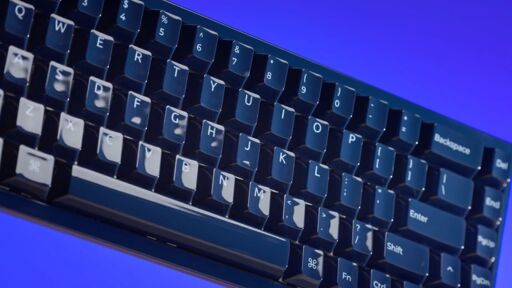I remember going through an extended ‘thock’ phase, ie, that period of my life where I soaked in as many glorious custom mechanical keyboard ASMR videos as my little ears could handle. For some, that’s less of a phase and more of a lifestyle choice—and fair do’s, I say. If that describes you, then I have something positively titillating for you: a fully ceramic keyboard from Keychron.
It seems like it might be titillating for more than a few people, too, because the Q16 HE 8K Kickstarter project has raised a whopping 48x its Kickstarter goal, with $488,375 (£359,459) currently pledged. It seems a lot of people have their eyes fixed on that glossy look.
If you’ve never graced your ears with the sound of ceramic keycaps before, then I suggest you do so. Keyboard sound profiles are subjective, of course, but I don’t think anyone would deny there’s at least something very distinctive about the ceramic sound.
I don’t doubt that will be amplified even more with the entire keyboard being ceramic rather than just the keycaps. Though I must say, after listening to some initial reviews (on the Kickstarter page), it strangely seems to sound a little less ceramic than some keyboards I’ve listened to with just ceramic keycaps and a meta or plasticl body.
It’s an interesting choice for Keychron to make this keyboard gaming-ified, though. The 65% profile Q16 HE 8K has TMR switches for analogue features, and it also has 8K polling for faster response times.
Image 1 of 3

(Image credit: Keychron)
Image 2 of 3

(Image credit: Keychron)
Image 3 of 3

(Image credit: Keychron)
The latter is a bit of a gimmick, in my opinion, especially for a keyboard, as 1–2K polling should do just fine. But the former is great, as this will allow you to adjust your keys’ actuation points to wherever you want and even turn on rapid trigger which will let you re-activate your key as soon as you let up on the previous keypress. In other words, you should be able to tailor your keyboard to get a miniscule amount of delay between your decision to press the key and that key actually registering.
As I say, it’s interesting the ceramic keyboard is packing in all this competitive gaming tech, because ceramic probably isn’t the kind of material you’d associate with such things. It’s notoriously heavy compared to normal keycap materials, which means it’s better-suited to heavier switches, and competitive FPS gamers tend to (though don’t always) prefer lighter switches.
One thing I can personally vouch for is the software you’ll be using to manage all this TMR tech, as I’ve used it to set up the Keychron Q5 HE that I use as my daily driver. It’s web-based, so no install required, and is very easy and intuitive to use, with plenty of features and granular control offered.
So, if you’re looking for something shiny—and it certainly does look to be that—and a little different, the ‘world’s first fully ceramic keyboard’ might be a good shout.
From PCGamer latest via this RSS feed


